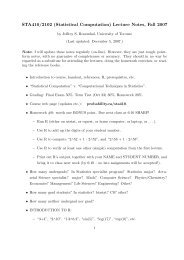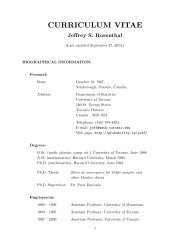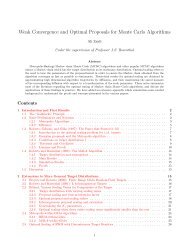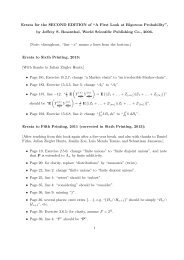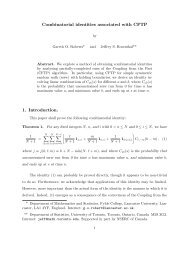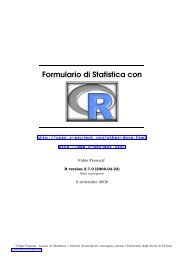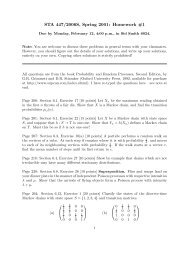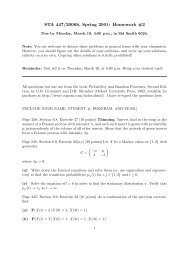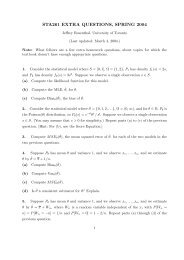Causal Inference: The R package pcalg
Causal Inference: The R package pcalg
Causal Inference: The R package pcalg
Create successful ePaper yourself
Turn your PDF publications into a flip-book with our unique Google optimized e-Paper software.
16 <strong>Causal</strong> Graphical Models: Package <strong>pcalg</strong><br />
1 2<br />
3 4<br />
5<br />
2 3<br />
●<br />
4<br />
●<br />
●<br />
●<br />
5<br />
●<br />
●<br />
Figure 5: True underlying DAG (left) and estimated PAG (right), when applying the FCI<br />
and RFCI algorithms to the data set gmL. <strong>The</strong> output of FCI and RFCI is identical. Variable<br />
V 1 of the true underlying DAG is latent.<br />
D-SEP sets and thus does not make tests conditioning on them. This makes rfci() much<br />
faster than fci(). <strong>The</strong> orientation rule for v-structures and the orientation rule for so-called<br />
discriminating paths (rule 4) were modified in order to produce a PAG which, in the oracle<br />
version, is guaranteed to have correct ancestral relationships.<br />
<strong>The</strong> function can be called in the following way:<br />
rfci(suffStat, indepTest, p, alpha, verbose = FALSE, fixedGaps = NULL,<br />
fixedEdges = NULL, NAdelete = TRUE, m.max = Inf)<br />
where the arguments suffStat, indepTest, p, alpha, fixedGaps, fixedEdges, NAdelete<br />
and m.max are identical to those in skeleton().<br />
As an example, we re-run the example from Section 3.3 and show the PAG estimated with<br />
rfci() in Figure 5. <strong>The</strong> PAG estimated with fci() and the PAG estimated with rfci() are<br />
the same.<br />
R> data("gmL")<br />
R> suffStat1 pag.est



